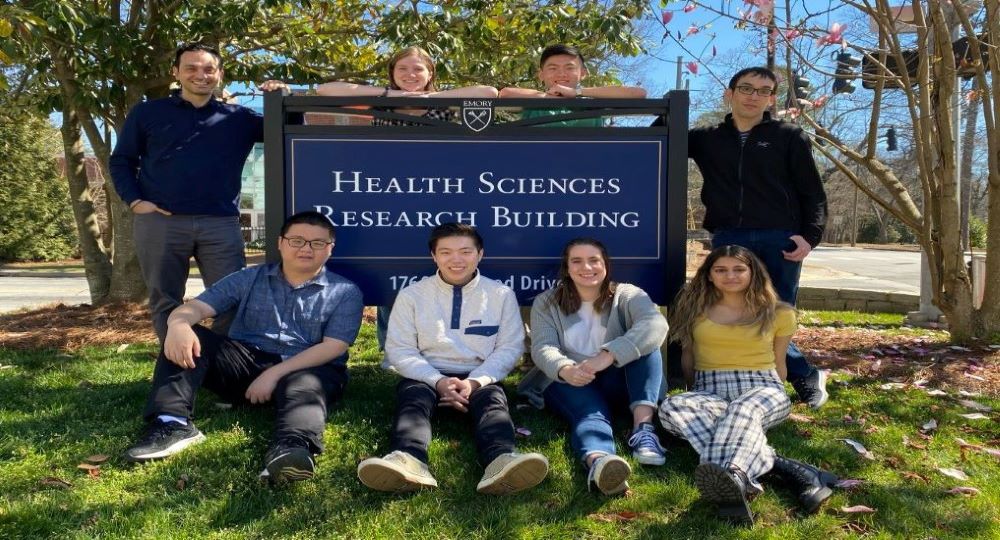The Sarafianos Laboratory works towards unraveling the molecular details of how biomedically-relevant enzymes function, how they are inhibited, how they develop drug resistance and towards developing drugs that will treat human disease by novel mechanisms of action. In pursuit of these goals they use a combination of conventional and cutting-edge research tools, including protein biochemistry, molecular biology, fluorescence imaging/microscopy, macromolecular engineering, X-ray crystallography, molecular modeling, enzymology, and high-throughput technologies. Target proteins include HIV reverse transcriptase, HIV capsid protein, Hepatitis B virus (HBV) reverse transcriptase, and HBV capsid protein. Ongoing efforts focus on various steps of HIV, HBV, and Hepatitis C virus (HCV) life cycles, including cell entry, uncoating, reverse transcription, nuclear entry, assembly, and host interactions towards developing novel therapeutics.

Dr. Raymond F. Schinazi is the Frances Winship Walters Professor of Pediatrics, director of the Division of Laboratory of Biochemical Pharmacology (LOBP), and co-director of the HIV Cure Scientific Working Group within the NIH-sponsored Emory University Center for AIDS Research (CFAR). His research group consists of a dynamic team with expertise spanning medicinal chemistry, virology, molecular biology, toxicology, pharmacology, immunology, and computational biology. The Schinazi lab focuses its research in three medically important areas.

The primary interest of the Schinazi lab is to design and develop novel antiviral agents with the goal of advancing promising compounds to clinical trials. The group is developing novel small molecule inhibitors for the treatment of human viral infections including HIV, herpesviruses, hepatitis B and C, as well as emerging human viruses including Dengue, West Nile, Yellow Fever, Chikungunya, Ebola, Norovirus and Enteroviruses. To complement drug discovery efforts, the group excels in the phenotypic and genotypic characterization of drug-resistant virus variants with the intention of mitigating resistance selection using drug combinations. Five antiviral agents developed in the Schinazi lab have gone on to advanced clinical studies resulting in 22 NDA approvals.
The second area of research is in the development of treatments for the protozoa Cryptosporidium parvum led by Jan Mead, PhD. This parasite is responsible for the development of cryptosporidiosis with the potential to develop severe, live-threatening illness. This work involves animal models (SCID mice), cell culture methods, and molecular approaches (e.g., DNA library construction, sequencing) to identify targets unique to this organism.
The third area of research is in the discovery of novel agents for the treatment of non-alcoholic fatty liver disease (NAFLD), non-alcoholic steatohepatitis (NASH) and other liver diseases. It is estimated that at least 30% of the United States population has NAFLD, and of those affected by NAFLD, about 20% develop NASH which can lead to cirrhosis, liver failure, or hepatocellular carcinoma. Currently, there are no effective therapeutic options to treat NASH and prevent development of severe pathologies. The Schinazi lab is developing small molecules as lead candidates for NASH using in-house medicinal chemistry, structure-based drug design, pharmacology and animal model capabilities.
Dr. Schinazi’s lab was established in 1983 and is currently housed in Emory’s Health Science Research Building. The lab employs over 70 people, including several research faculty, post-doctoral fellows, support scientists, research staff, administrative personnel and graduate students. The laboratory consists of approximately 3900 sq. ft. of lab space, with another 700 sq. ft. dedicated to administration. This includes BSL-2 and BSL-2* laboratories for research and training, four dedicated molecular biology labs, three cellular/molecular toxicology and pharmacological facilities, mass spectrometry, gene chip and flow cytometry facilities.
Ongoing projects are primarily funded by multiple grants from the NIH, including one from Emory’s Center for AIDS Research (CFAR).





